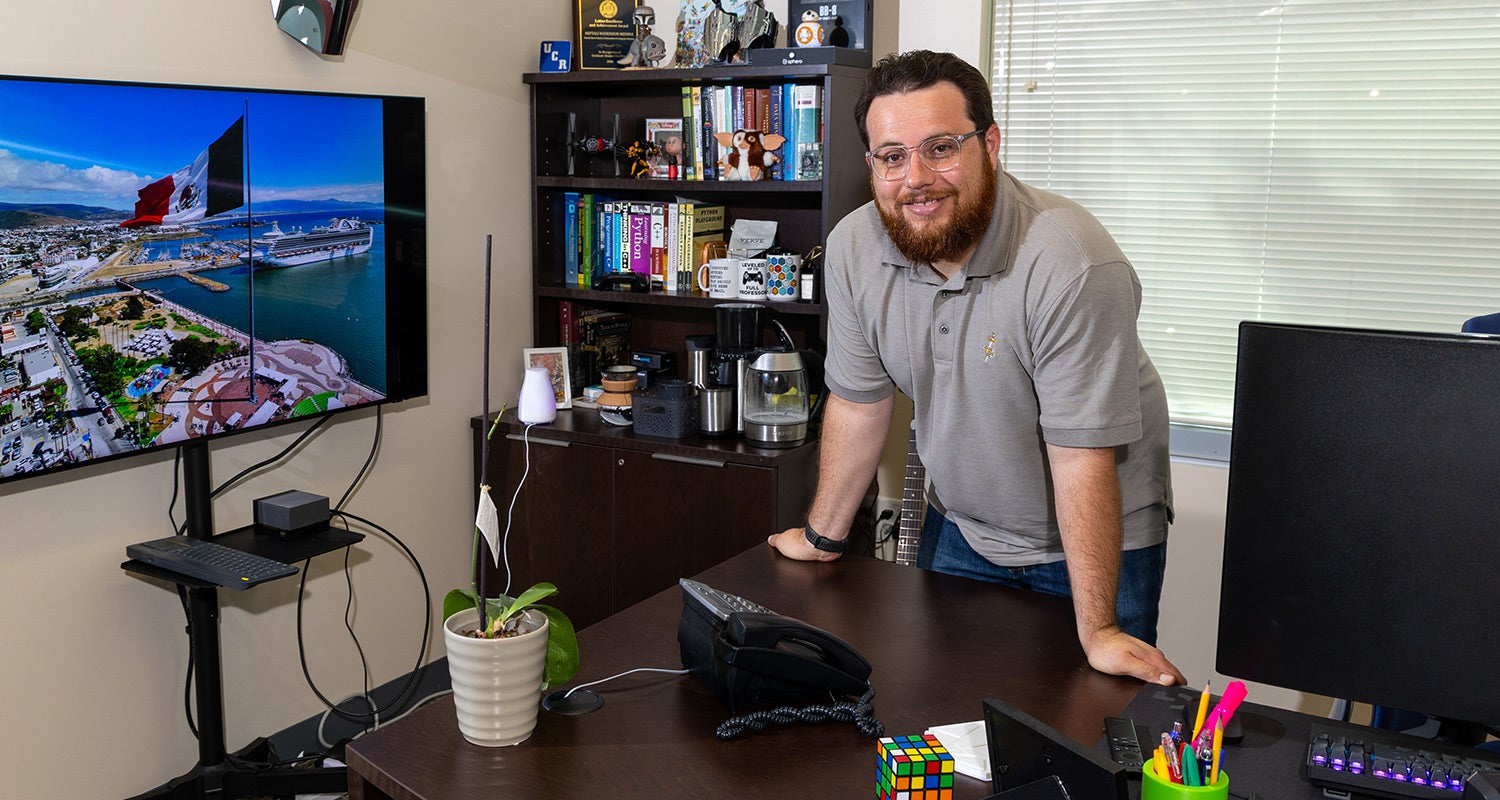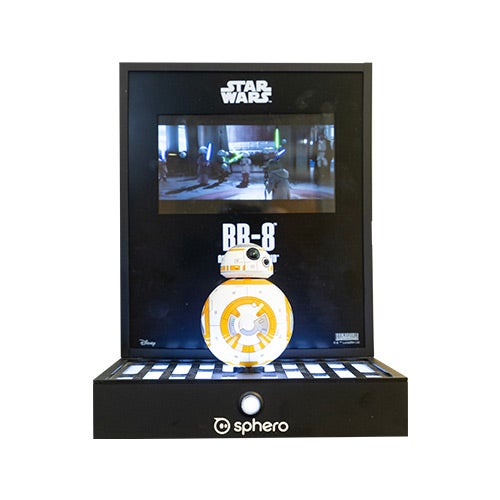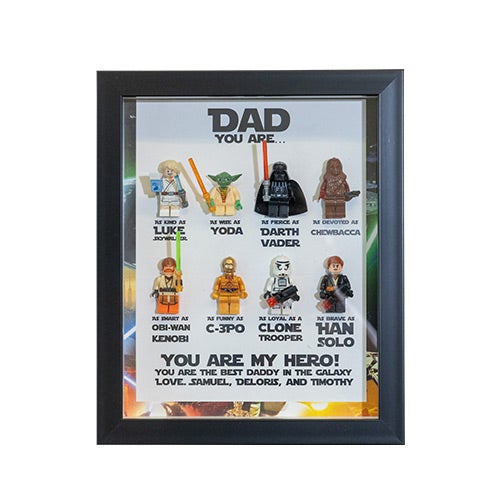OFFICE HOURS
Creative Computing
For Neftali Watkinson, teaching computer science is all about breaking down concepts to build students up
By Sarah Nightingale | Photos by Stan Lim
W hen Neftali Watkinson was deciding between majors, he landed on computer science because he didn’t want to deal with people — or so he thought. As it turns out, he was in the right major for the wrong reasons. These days, the most satisfying part of his job is breaking down computer science concepts for students, helping them gain confidence in a discipline that’s earned a reputation as being tough.
Watkinson, an assistant teaching professor of computer science in UCR’s Marlan and Rosemary Bourns College of Engineering, joined UCR in 2021. His road to Riverside involved earning bachelor’s and master’s degrees in his hometown of Ensenada, Mexico, and a doctorate from UC Irvine. Upon being hired by UCR, Watkinson’s first investment was a video podcasting setup — including an oversized monitor, microphone, and white light — to improve the quality of online teaching during the COVID-19 pandemic.
“I hate teaching online because I like interacting with the students in the classroom,” Watkinson said. “But I understand that they want to take online classes, especially over the summer. I try to make the best out of it, so I figured I better have good quality audio and video to engage with them.”
In addition to teaching fundamentals, like data structures and algorithms, as well as more advanced classes in software design, Watkinson teaches several hands-on courses. The “edge computing” course he developed as a doctoral student challenges students to use a microcomputer called a Jetson Nano to build out an edge computing system.
“Edge devices are devices that interact with the real world — our cell phones and smart drones are examples of edge devices because they are capturing data from the real world and then making decisions using that data,” Watkinson said. “I had one team create a trash sorting system and another create a social distancing system using cameras to detect if people were too close to each other. Students have a lot of fun because they’re building something physical and not just sitting behind the screen.”
Watkinson also mentors students in a research project that involves bringing historical figures to life through animation and artificial intelligence. Imagine having a Zoom chat with Franklin D. Roosevelt: That’s what Watkinson’s students are working towards as they develop a chatbot to simulate a factually accurate, authentic conversation while also creating an animated face complete with natural mouth movements and expressions.
The work stems from Watkinson’s previous collaboration with artist Belu Fainaru to develop simulations of Romanian dictator Nicolae Ceausescu and poet Paul Celan, which were displayed at the renowned Venice Biennale cultural exhibition. Each morning at the event, a 10-year-old girl would stop by to quiz the character of Ceausescu, sparking Watkinson’s idea to develop similar simulations as tools for teaching history.
“That interaction nudged me toward the direction we’re headed right now with F.D.R.,” Watkinson said. “To take advantage of that fascination from kids and create something that can teach them about history or science.”
A common question weaves together Watkinson’s teaching and research: How can we engage all students in a field that, like it or not, is becoming increasingly more prominent in our lives?
“I seriously believe computer science is for everybody,” Watkinson said. “We’re living in a virtual world that is getting more and more virtualized, and those who understand and know how to manipulate the virtual world are going to be the leaders of tomorrow.”
As a Latino and first-generation college student, Watkinson chose to work at UCR because “it’s really important to have people who share experiences with the students we’re teaching.”
“I really believe in our students and in the mission we have as an institution,” he said.
As faculty supervisor for the department’s Undergraduate Learning Assistants program, Watkinson helps pair up students who’ve successfully completed courses with those just starting them. Twenty-two students now serve as mentors across 11 of the department’s courses, helping with lab projects and hosting office hours. Watkinson said early efforts to measure the effectiveness of the program are highlighting its success. But the reason might be less about study sessions and test-taking tips and more about support and encouragement.
“A lot of it has to do with confidence,” he said. “Even though I am a first-generation college student, I was surrounded by a lot of people pushing me forward and helping me navigate this. Not everybody has this.”
That’s something Watkinson is hoping to change.
“The number one reason students leave college within the STEM fields is because they didn’t feel like they were adequate,” he said. “The number one reason they stay is because they encountered someone who told them they were. We need to normalize that support and make it available for everyone.”
Return to UCR Magazine: Spring 2024




